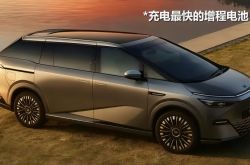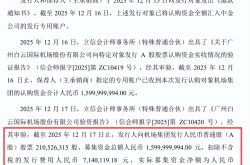How have NIO, XPeng, and Li Auto fared after a decade?
![]() 09/13 2024
09/13 2024
![]() 550
550
Lead
As representatives of China's first batch of new-energy vehicle startups, NIO, XPeng, and Li Auto have always been points of interest.
Produced by | Heyan Automotive Studio
Written by | Zhang Dachuan
Edited by | Heyan
Total words: 2860
Reading time: 4 minutes
As part of China's first wave of "F4" new-energy vehicle startups, all but WM Motor (now struggling) are still thriving.
Recently, NIO, XPeng, and Li Auto have all released their second-quarter/first-half financial reports. Marking their tenth anniversary, NIO and XPeng, despite still reporting losses, are showing promising prospects with their absolute loss amounts consistently decreasing. Meanwhile, while Li Auto remains profitable, the quality of its earnings is starting to decline. In particular, Li Auto's hopes now rest solely on its upcoming pure electric vehicle models next year, and whether it can avoid repeating the mistakes of the MEGA program will be the biggest focus.

△NIO, XPeng, and Li Auto's financial reports each have their own merits
NIO and XPeng Strive to 'Break Free'
From a data perspective, the financial reports of NIO, XPeng, and Li Auto are not bad.
NIO's revenue in the second quarter reached 17.45 billion yuan, an increase of 98.9% year-on-year. Correspondingly, sales reached 57,373 units, up 143.9% year-on-year. Notably, NIO's gross margin on vehicle sales increased to 12.2%, a year-over-year increase of 6 percentage points, continuing to lead the pure electric vehicle market. Driven by revenue and gross margin, NIO's net loss narrowed significantly by 16.7% to 5.046 billion yuan. Meanwhile, NIO also released what can be considered its strongest quarterly guidance to date. Its monthly sales in the third quarter will remain above 20,000 units, with quarterly delivery guidance of 61,000 to 63,000 units and revenue of 19.11 to 19.67 billion yuan. Through the launch of high-margin models and optimization of product cost structures, NIO expects to achieve a gross margin of 15% in the fourth quarter.

△NIO's net loss narrows
XPeng also delivered a solid quarterly financial report. In the second quarter of this year, XPeng's total revenue reached 8.11 billion yuan, an increase of 60.2% year-on-year. Automobile sales revenue accounted for the majority at 6.82 billion yuan, up 54.1% year-on-year. In line with the increase in automobile sales revenue, XPeng's deliveries exceeded 30,000 units in the second quarter, up 30.2% year-on-year. In terms of profitability, XPeng, like NIO, significantly narrowed its losses, from 2.8 billion yuan in the same period last year to 1.28 billion yuan in the second quarter of this year. Beyond revenue growth and loss reduction, the highlight of XPeng's financial report was its improved gross margin in the second quarter. XPeng's gross margin rose to 14%, up from 12.9% in the first quarter.

△XPeng's gross margin continues to climb
Li Auto's first-half performance was also impressive. In terms of sales, despite competition from AITO's models, Li Auto sold 189,000 vehicles in the first half, up 36% year-on-year, ranking first among China's new-energy vehicle startups. Notably, in the new energy vehicle market above 200,000 yuan, Li Auto's market share reached 14.1%. In terms of revenue, Li Auto's total revenue in the first half reached 57.3 billion yuan, up 20.8% year-on-year. In terms of profitability, Li Auto has achieved profitability for seven consecutive quarters, with a net profit of 1.692 billion yuan in the first half.

△Li Auto has been profitable for seven consecutive quarters
Where are NIO and XPeng's Profit Points?
NIO and XPeng's next focus will be on product penetration. Through early investments and development, both NIO and XPeng have established strong brand appeal in China. In this context, driving product penetration is likely to boost overall brand sales.
NIO's second brand, Ledo, will soon launch its first model, the L60, with deliveries expected to begin at the end of September. By introducing NIO's BaaS battery leasing model and integrating into the charging and swapping network, the L60, if priced reasonably, will become an important source of sales growth for NIO. Coinciding with NIO's second brand delivery, XPeng will begin delivering the first model of its MONA series, the M03. Priced from 119,800 yuan, the M03 received over 30,000 orders within 48 hours of its launch. Later, with the launch of the XPeng P7+, XPeng aims to deliver 30,000 units per month in the fourth quarter.

△Both NIO and XPeng will increase overall sales by introducing lower-priced models
Besides these two new brands/series, there are other highlights in NIO and XPeng's financial reports worth noting.
In NIO's financial report, R&D investment remains a key focus. In the second quarter, NIO's R&D investment exceeded 3 billion yuan, reaching 3.22 billion yuan, with cumulative R&D investment since 2016 reaching 50 billion yuan. As of the end of the second quarter, NIO's cash reserves reached 41.6 billion yuan, meaning NIO will still be able to maintain quarterly R&D investments of 3 billion yuan in the coming period. Sustained high R&D investments have paid off for NIO: the successful tape-out of the world's first 5-nanometer self-developed autonomous driving chip Shenji NX9031, China's first vehicle-wide operating system SkyOS·Tianshu, Banyan 3.0, multiple NOMI agents, and the NWM autonomous driving world model to be mass-produced in the fourth quarter of this year. For NIO, the next step is to better utilize these R&D investments in its models and convert them into brand strength advantages.

△NIO's R&D investment consistently remains at 3 billion yuan per quarter
In XPeng's financial report, the focus is on technology licensing and development fees from Volkswagen. Compared to Geely, which licensed its technology to Volvo, Lotus, Polestar, and Smart within the group, XPeng faced greater challenges in securing orders from Volkswagen. From Volkswagen's strategy perspective, its simultaneous investments in XPeng and Rivian in China and the United States were a correction for CARIAD's failure to deliver products on schedule. For XPeng, this will directly bring in considerable revenue. Currently, the confirmed cooperation between XPeng and Volkswagen covers two main areas: developing two B-segment electric vehicles with Volkswagen branding based on XPeng's G9 platform and intelligent technology; and jointly developing an electronic and electrical architecture that can be integrated into Volkswagen's CMP and MEB platforms in China based on XPeng's latest-generation electronic and electrical architecture.

△XPeng begins charging Volkswagen for technology transfer and joint development fees
What are the Hidden Concerns of NIO, XPeng, and Li Auto?
For NIO and XPeng, the Ledo L60 and MONA M03 are sources of sales and performance growth, but if not properly planned initially, they could become hidden concerns. Both models are cost-effective offerings within their respective brands, which will inevitably divert sales from existing models. Achieving 1+1>2 and maximizing sales from competitors in today's fiercely competitive market is not an easy task.
If most of the sales ultimately divert from other models within the same brand, such as customers who would have otherwise purchased the NIO ES6 opting for the L60, even high sales of the L60 may not significantly boost NIO's overall sales and could even lower its gross margin. For XPeng, in addition to addressing the differentiation between the MONA series and other XPeng models, it must also consider whether the deployment of XPeng's electronic and electrical architecture in Volkswagen's domestic models will divert XPeng customers to Volkswagen. After all, in most parts of China, Volkswagen's appeal is stronger than XPeng's.

△If not properly planned, XPeng and NIO's entry-level models could divert existing sales and lower gross margins
To some extent, Li Auto's hidden concerns may be even greater. Unlike last year's rapid growth, the quality of Li Auto's earnings in this year's financial reports has significantly declined:
1. Financial investment income dominates. While Li Auto remains profitable, its operating loss in the second quarter reached 117 million yuan, marking the second consecutive quarter of operating losses following the first quarter. However, thanks to Li Auto's nearly 100 billion yuan in cash reserves, it earned over 1.4 billion yuan in interest and investment income, directly covering its operating losses.
2. Following the poor reception of the MEGA program announced earlier in the year, Li Auto quickly returned to its familiar extended-range electric vehicle (EREV) track and launched the L6. While stabilizing Li Auto's sales, the L6 also diverted some sales from the L8/7. This resulted in Li Auto's average vehicle revenue dropping to 303,200 yuan, and its gross margin declining from 20.5% in the same period last year to 19%.

△The quality of Li Auto's earnings declined in the second quarter
After exhausting its EREV offerings, Li Auto's upcoming three pure electric vehicle models next year will be its primary sources of sales. To this end, Li Auto has continued to invest in autonomous driving and ultra-fast charging. In the field of autonomous driving, Li Auto has upgraded to end-to-end capabilities and become one of the few domestic automakers to offer nationwide mapless NOA. In the field of ultra-fast charging, as previously promised by Li Xiang, Li Auto will provide users with over 2,000 supercharging stations. With the support of autonomous driving and ultra-fast charging, whether Li Auto can overcome the shadow of the MEGA program in the electric vehicle market and become one of the most anticipated events in China's automotive market next year remains to be seen.
Commentary
For new-energy vehicle startups, the real test begins when multinational automakers and traditional domestic automakers adopt similar features like refrigerators, TVs, and large seats, when they start applying autonomous driving and smart cockpit technologies to their models, and even when they become familiar with the tactics of new-energy vehicle startups and are willing to engage in price wars in the domestic market regardless of costs.
(This article is originally created by Heyan Automotive Studio and may not be reprinted without authorization)





